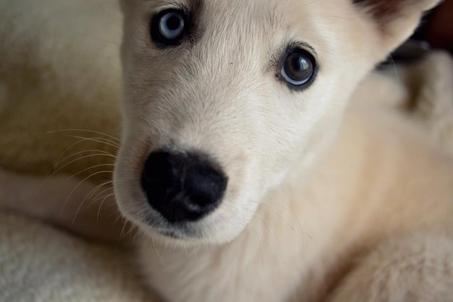For many years scientists - myself included - believed dogs couldn't see colors. Recent studies have shown we were wrong, fortunately!
Dogs have cone cells in their eyes, just like us humans, but they have only 10% of the amount we do. Their cells are equivalent to our red cone cells (which allows us to see the color red) and blue cone cells (that allows us to see blue). However, their cells makes them see greenish yellow and violet, respectively. This results in a type of daltonism that causes dogs to confound red and green. Despite this, they're pretty good in distinguishing green from blue. If you throw a red and a blue ball in the grass, your dog will probably find the blue one easier, for example.
They can also see much better than us in the dark, because of their rod cells and tapetum lucidum in the back of the eye. Awesome!
Dogs have cone cells in their eyes, just like us humans, but they have only 10% of the amount we do. Their cells are equivalent to our red cone cells (which allows us to see the color red) and blue cone cells (that allows us to see blue). However, their cells makes them see greenish yellow and violet, respectively. This results in a type of daltonism that causes dogs to confound red and green. Despite this, they're pretty good in distinguishing green from blue. If you throw a red and a blue ball in the grass, your dog will probably find the blue one easier, for example.
They can also see much better than us in the dark, because of their rod cells and tapetum lucidum in the back of the eye. Awesome!
~Ally

 RSS Feed
RSS Feed